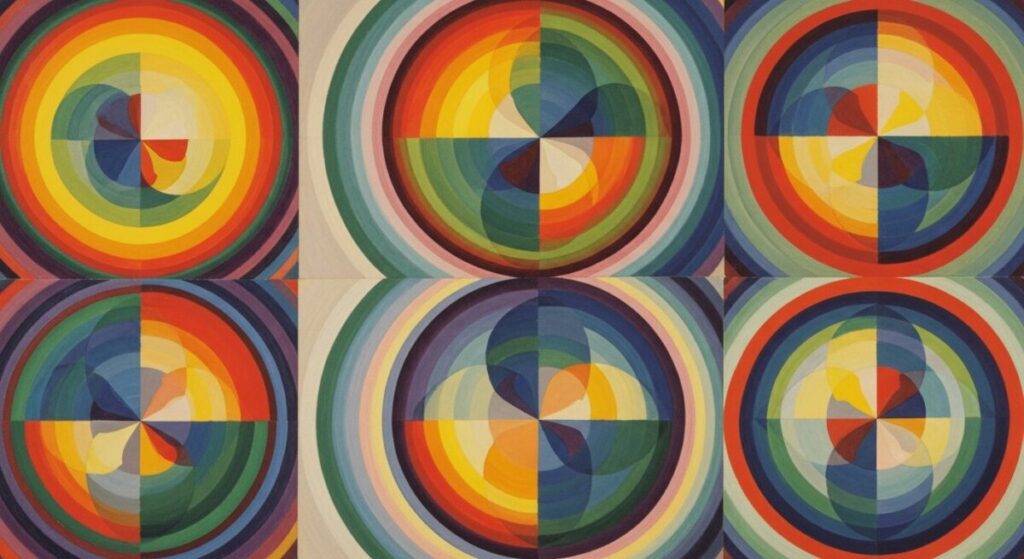“Ever wondered why Picasso’s paintings look like broken puzzles?” That’s Cubism at work! This groundbreaking art movement shattered traditional perspectives and turned the art world on its head. But what exactly is Cubism, and why is it so influential? Let’s dive into the world of fragmented forms and multiple viewpoints to find out.
My first exposure to Cubism: During a visit to the Tate Modern, I was captivated by Picasso’s “Les Demoiselles d’Avignon.” The fragmented forms and bold colors sparked a mix of confusion and fascination. I learned that this groundbreaking piece was initially met with horror and dismissal, even by Henri Matisse. This experience deepened my appreciation for artists who challenge conventions, reminding me that art is about feeling and perception. Cubism’s boldness opened doors to new possibilities, and I cherish its impact on the art world. So let’s explore and appreciate Cubism.
The Origins of Cubism
Cubism emerged in Paris around 1907-1908, primarily through the pioneering works of Pablo Picasso and Georges Braque. The movement was a radical departure from traditional Western art, which had been dominated by the rules of perspective since the Renaissance.
Key Factors Contributing to Cubism’s Development:
- Influence of African and Iberian sculpture
- Post-Impressionist works of Paul Cézanne
- The rise of photography and cinema
- Scientific discoveries challenging traditional perceptions of reality
Characteristics of Cubism
Cubism is characterized by its unique approach to representing three-dimensional objects on a two-dimensional canvas. Instead of adhering to conventional perspective, Cubist artists sought to depict subjects from multiple viewpoints simultaneously.
Main Features of Cubist Art:
- Fragmentation: Breaking down objects into geometric shapes
- Multiple perspectives: Showing different angles of an object in a single image
- Flattened space: Rejecting traditional depth and perspective
- Limited color palette: Often using muted earth tones
- Emphasis on form over content: Focusing on the abstract qualities of objects
Phases of Cubism
Cubism evolved through two main phases: Analytic Cubism and Synthetic Cubism.
Analytic Cubism (1908-1912)
This early phase is characterized by:
- Monochromatic color schemes (mostly browns and grays)
- Fragmentation of forms into small, angular planes
- Ambiguous spatial relationships
- Complex, interlocking shapes
Famous works from this period include Picasso’s “Les Demoiselles d’Avignon” (1907) and Braque’s “Houses at L’Estaque” (1908).
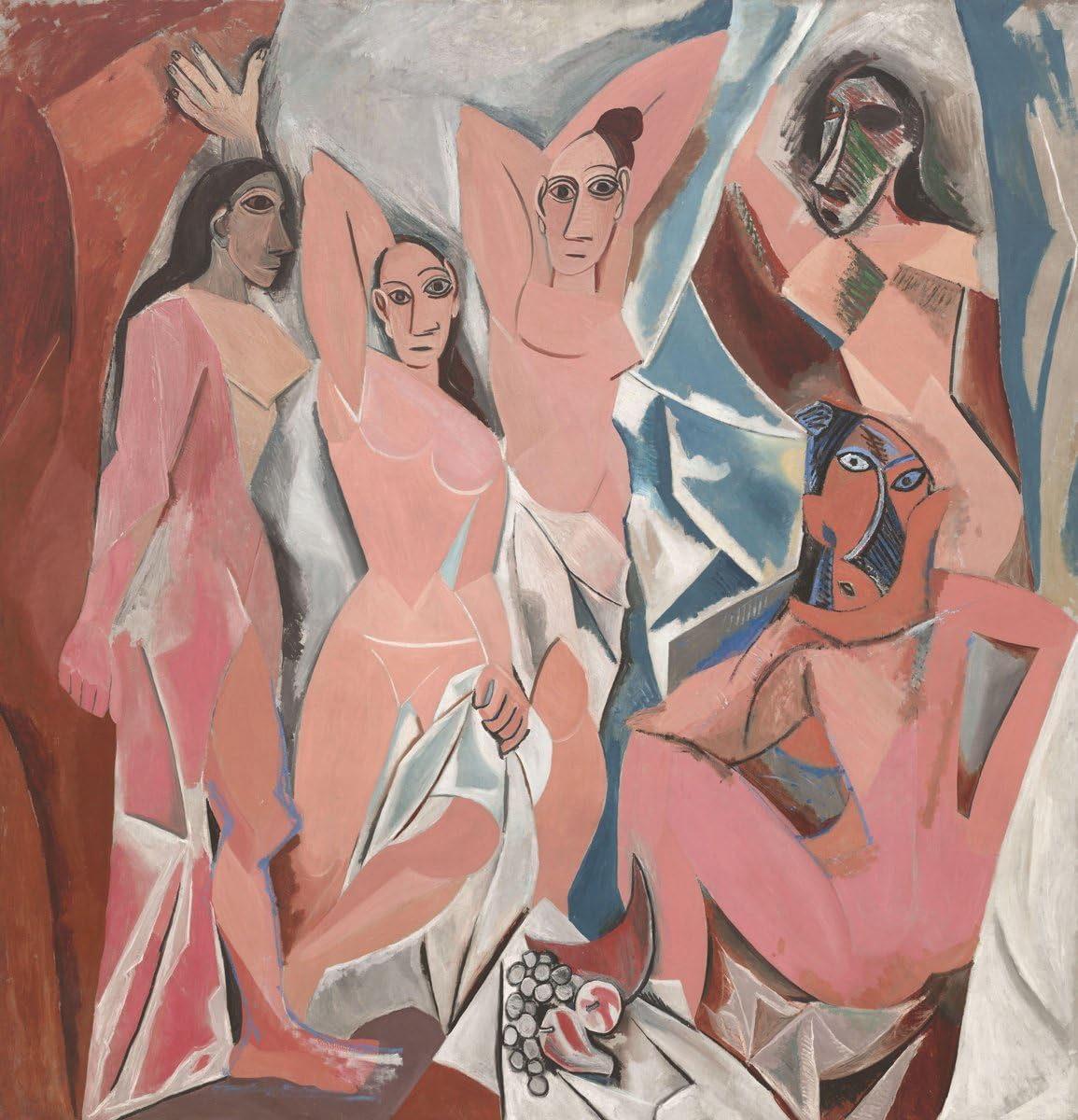
Synthetic Cubism (1912-1914)
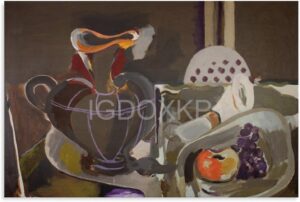
The later phase of Cubism introduced:
- Brighter colors and bolder patterns
- Collage and papier collé techniques
- Simpler shapes and more recognizable forms
- Integration of text and everyday objects
Notable examples include Picasso’s “Still Life with Chair Caning” (1912) and Braque’s “Fruit Dish and Glass” (1912).
Key Artists of the Cubist Movement
While Picasso and Braque are considered the founders of Cubism, several other artists made significant contributions to the movement:
- Pablo Picasso (1881-1973): Spanish painter, sculptor, and co-founder of Cubism
- Georges Braque (1882-1963): French painter and co-founder of Cubism
- Juan Gris (1887-1927): Spanish painter known for his analytical approach to Cubism
- Fernand Léger (1881-1955): French painter who developed a unique form of Cubism with cylindrical forms
- Robert Delaunay (1885-1941): French artist who explored color in Cubist compositions
- Albert Gleizes (1881-1953): French painter and theorist who helped popularize Cubism
- Jean Metzinger (1883-1956): French painter and theorist who co-authored the first book on Cubism
The Impact and Legacy of Cubism
Cubism’s influence extended far beyond the visual arts, impacting various fields and subsequent art movements:
Architecture
Cubist principles influenced modernist architects like Le Corbusier, leading to new approaches in building design and urban planning.
Literature
Writers such as Guillaume Apollinaire and Gertrude Stein incorporated Cubist ideas of fragmentation and multiple perspectives into their work.
Music
Composers like Igor Stravinsky and Arnold Schoenberg experimented with dissonance and complex rhythms, mirroring Cubism’s break from tradition.
Fashion and Design
Cubism inspired new patterns and forms in textile design, furniture, and fashion, particularly influencing Art Deco.
Subsequent Art Movements
Cubism paved the way for various avant-garde movements, including:
- Futurism
- Constructivism
- De Stijl
- Abstract Expressionism
Understanding and Appreciating Cubist Art
| TOOL: Explore Cubism | |
|---|---|
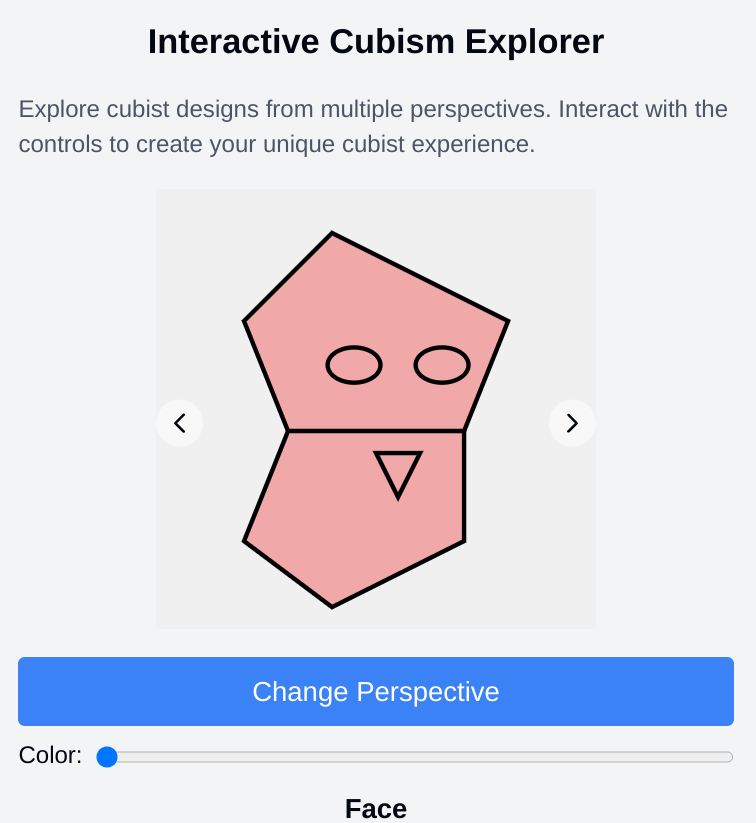 | Discover the fascinating world of Cubism with this interactive explorer. Dive into geometric interpretations of everyday objects, viewing them from multiple perspectives simultaneously. Experiment with different designs, angles, and colors to create your own Cubist-inspired artwork. This tool offers an engaging way to understand and appreciate the revolutionary art movement that challenged traditional representation in the early 20th century. |
For beginners, Cubist art can sometimes appear confusing or difficult to interpret. Here are some tips for appreciating Cubist works:
- Look for recognizable elements: Despite the fragmentation, many Cubist paintings contain identifiable objects or figures.
- Observe the composition: Pay attention to how shapes and lines interact to create balance and rhythm.
- Consider multiple viewpoints: Try to identify different perspectives of the same object within the painting.
- Appreciate the technique: Notice the artist’s brushwork, use of color, and handling of space.
- Read the title: Sometimes, the title can provide clues about the subject matter or the artist’s intentions.
- Context matters: Learn about the historical and cultural context in which the work was created.
Famous Cubist Artworks to Explore
To deepen your understanding of Cubism, consider exploring these iconic works:
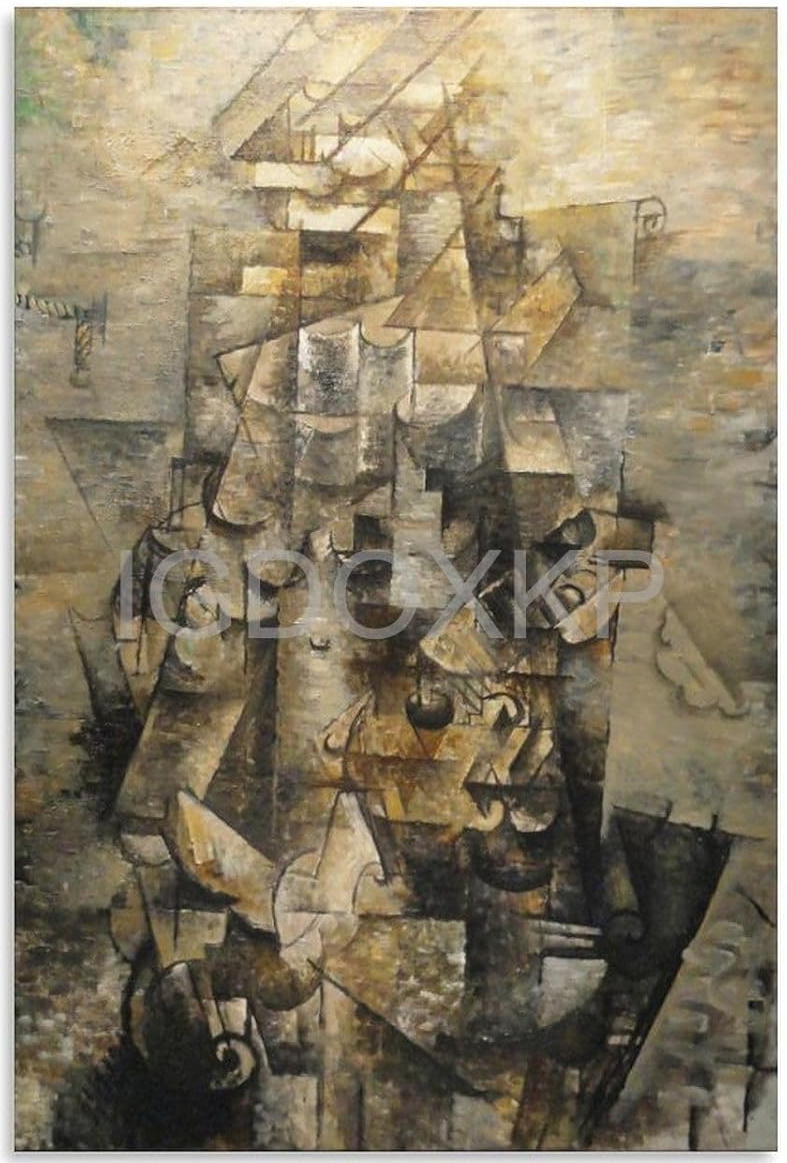
- “Les Demoiselles d’Avignon” (1907) by Pablo Picasso
- “Portrait of Daniel-Henry Kahnweiler” (1910) by Pablo Picasso
- “Violin and Candlestick” (1910) by Georges Braque
- “The Portuguese” (1911) by Georges Braque
- “Man with a Guitar” (1911) by Georges Braque
- “Still Life with Chair Caning” (1912) by Pablo Picasso
- “Portrait of Pablo Picasso” (1912) by Juan Gris
- “Nude Descending a Staircase, No. 2” (1912) by Marcel Duchamp
- “The Card Players” (1913) by Fernand Léger
- “Harlequin with a Guitar” (1917) by Juan Gris
Discover More in our What is …. Series
What is Surrealism? Your Easy Guide to the Art Movement
What is Impressionism? A Beginner’s Guide to the Art Movement
What is Watercolor Painting? Your First Steps
Summary
Cubism represents a pivotal moment in the history of art, challenging centuries-old conventions and opening new possibilities for artistic expression. By breaking objects and figures into geometric shapes and presenting them from multiple viewpoints, Cubist artists revolutionized the way we perceive and represent the world around us.
As you explore Cubism further, remember that its influence extends far beyond the canvas. This revolutionary movement reshaped our understanding of art, space, and perception, leaving an enduring legacy that continues to inspire artists and thinkers to this day.
Whether you’re an art enthusiast or simply curious about this groundbreaking style, understanding Cubism can enrich your appreciation of modern and contemporary art. So next time you encounter a Cubist work, take a moment to consider its multiple perspectives, fragmented forms, and the radical vision it represents in the history of art.
Resources
- Cubism – Routledge Encyclopedia of Modernism
This article provides a comprehensive overview of Cubism, detailing its origins, key figures like Pablo Picasso and Georges Braque, and its influence on various art forms.
Read more here - The Influence of Cubism on Modern Art – Gallerease
This resource explores how Cubism originated as a reaction to Fauvism and its lasting impact on modern art and architecture. It discusses the characteristics and evolution of the movement.
Read more here - Cubism – Tate
This article from Tate discusses the revolutionary aspects of Cubism, its inception around 1907, and the different phases of the movement, including Analytical and Synthetic Cubism.
Read more here





